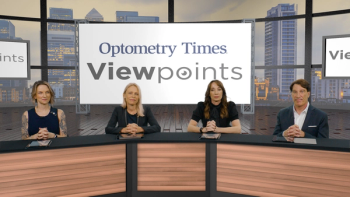
AAOpt 2024: An OD's role in corneal transplant management
Jamie Kuzniar, OD, FAAO, FSLS, overviews the basics on what to look out for complications-wise in corneal transplant patients that may require a referral.
Kuzniar provided an overview of her Rapid Fire session, "An OD's Role in Corneal Transplant management," that was presented alongside her colleagues Trevor Fosso, OD, FAAO, FSLS and Brooke Messer, OD, FAAO, FSLS, at the American Academy of Optometry meeting. Fosso's portion of the presentation addressed the post-operative management of corneal transplants. In some practices, optometrists may be responsible for managing these patients from the early post-op period through the first few months. Fosso shared insights on what to look for, including potential red flags and signs of poor healing that would warrant referring the patient back to the surgeon.
Messer's portion focused on the challenges and best practices for fitting corneal gas permeable (GP) lenses on transplant patients. Since the graft tissue is often not uniform, fitting GP lenses on these eyes can be tricky. Messer offered pearls of wisdom to achieve successful GP fittings on transplant patients.
In the final part of the Rapid Fire session, Kuzniar discussed the benefits and considerations of fitting scleral lenses on corneal transplant patients. While scleral lenses can be a great option, providing vault over the entire cornea, Kuzniar emphasized the need for closer monitoring. These eyes are more compromised, and she looks for signs of corneal edema, rejection, or irritation at the graft-host junction. Kuzniar explained that her monitoring protocol often includes mid-year check-ups, in addition to the initial fitting, to assess the health of the graft. She may also schedule a final check-up just before the warranty period ends on the scleral lens.
Kuzniar encourages his transplant patients to return at any time if they notice issues, rather than waiting for their scheduled appointments. The key takeaways Kuzniar hopes the optometric community will gain are increased confidence in managing post-op corneal transplants, an openness to fitting corneal GPs on these patients, and an understanding of the importance of close monitoring when using scleral lenses on transplant eyes.
Newsletter
Want more insights like this? Subscribe to Optometry Times and get clinical pearls and practice tips delivered straight to your inbox.












































.png)


